Abstract
OBJECTIVE: Human immunodeficiency virus (HIV) infection associated with injecting drug use has been reported in at least 98 countries and territories worldwide. There is evidence that new epidemics are emerging in different regions, including Eastern Europe, Latin American, and the eastern Mediterranean. The authors provide a global overview of the situation of HIV infection associated with injecting drug use and responses that have been implemented in various developing and transitional countries. METHODS: Although there has been extensive documentation of the extent and nature of of HIV infection associated with injecting drug use in many developed countries and the various interventions implemented in those countries, there is very limited information on the situation in developing and transitional countries. This chapter brings together information from a broad range of sources, including published literature; "gray" or "fugitive" literature; data collected by the World Health Organization (WHO), the Joint United Nations Programme on HIV/AIDS (UNAIDS) and the United Nations International Drug Control Programme (UNDCP); personal communications; and direct observation by the authors. The authors have traveled extensively to a wide range of developing and transitional countries and have accessed information not readily available to the international research community. RESULTS: A wide range of HIV prevention strategies targeting injecting drug users (IDUs) has been implemented in developing countries and countries in transition. Interventions include opioid substitution pharmacotherapy, needle syringe exchange and distribution, condom and bleach distribution, outreach to IDUs, peer education programs, and social network interventions. In some communities, completely new models of intervention and service delivery have developed in response to specific local needs and limitations. CONCLUSIONS: Although empirical data may currently be lacking to demonstrate the effectiveness of may HIV prevention programs targeting IDUs in developing and transitional countries, there is evidence that innovative HIV prevention initiatives are being implemented and sustained in a wide range of sociocultural settings.
Full text
PDF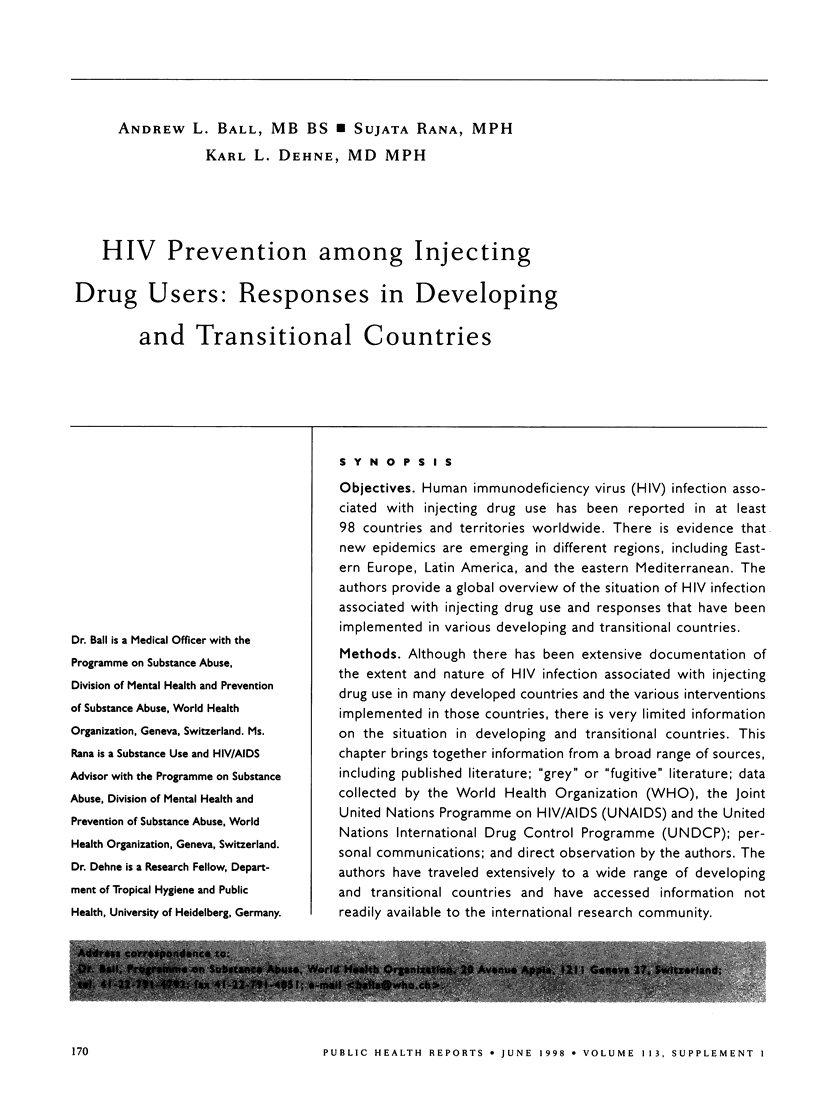
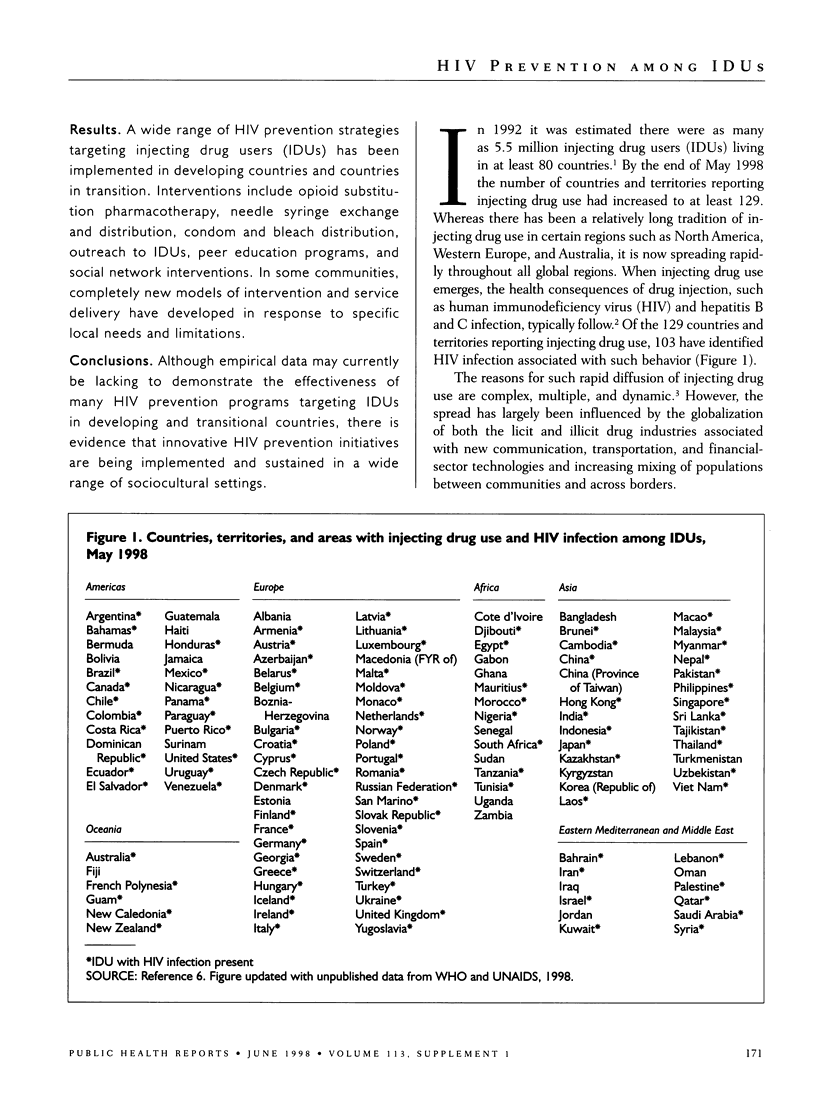
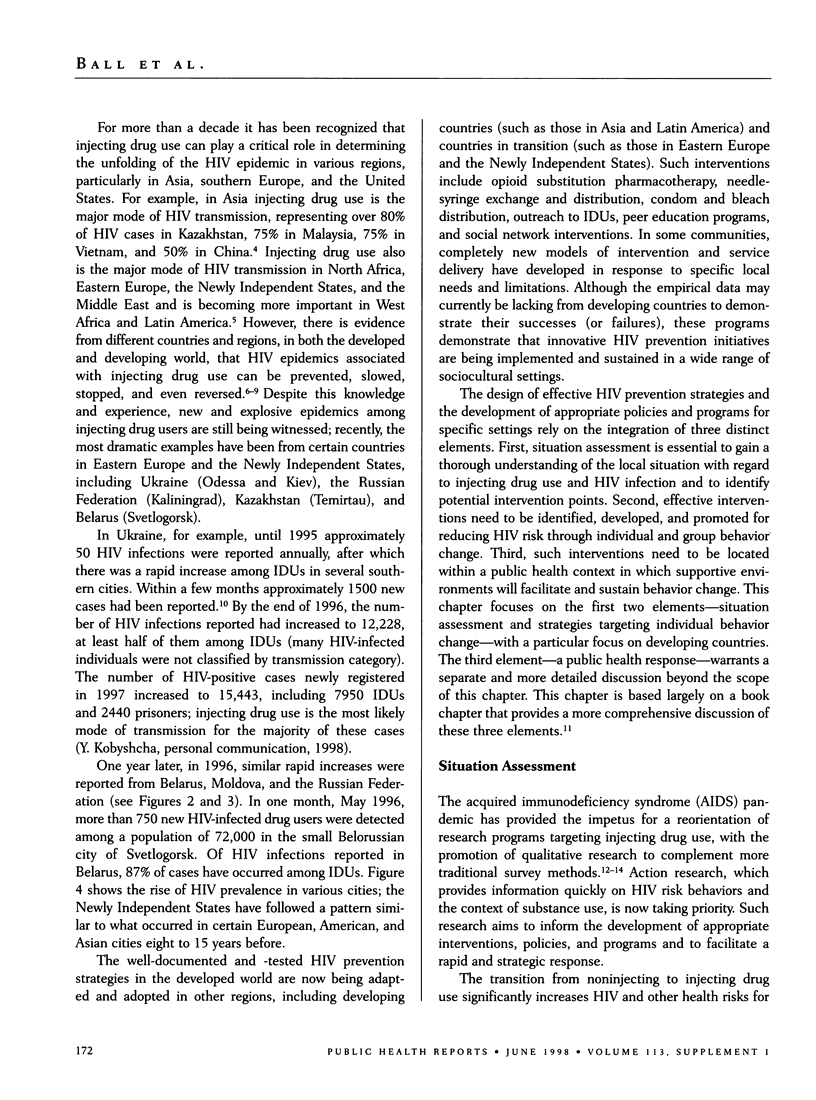
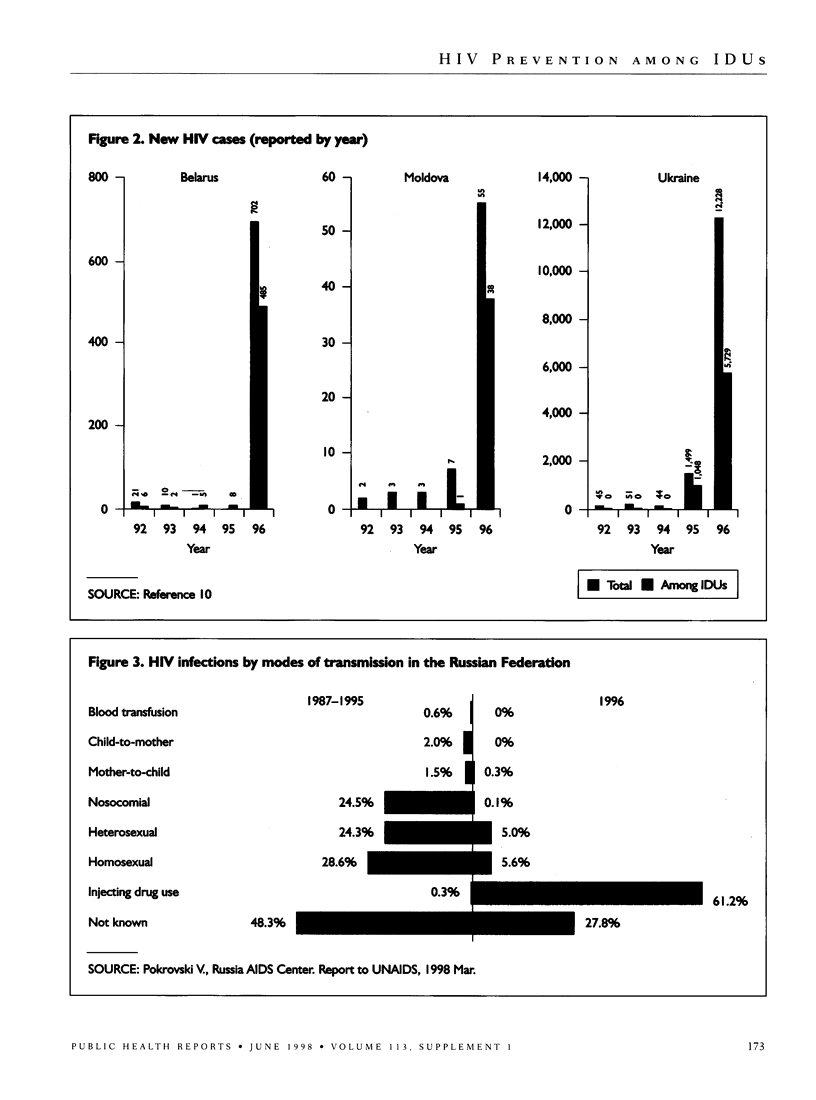
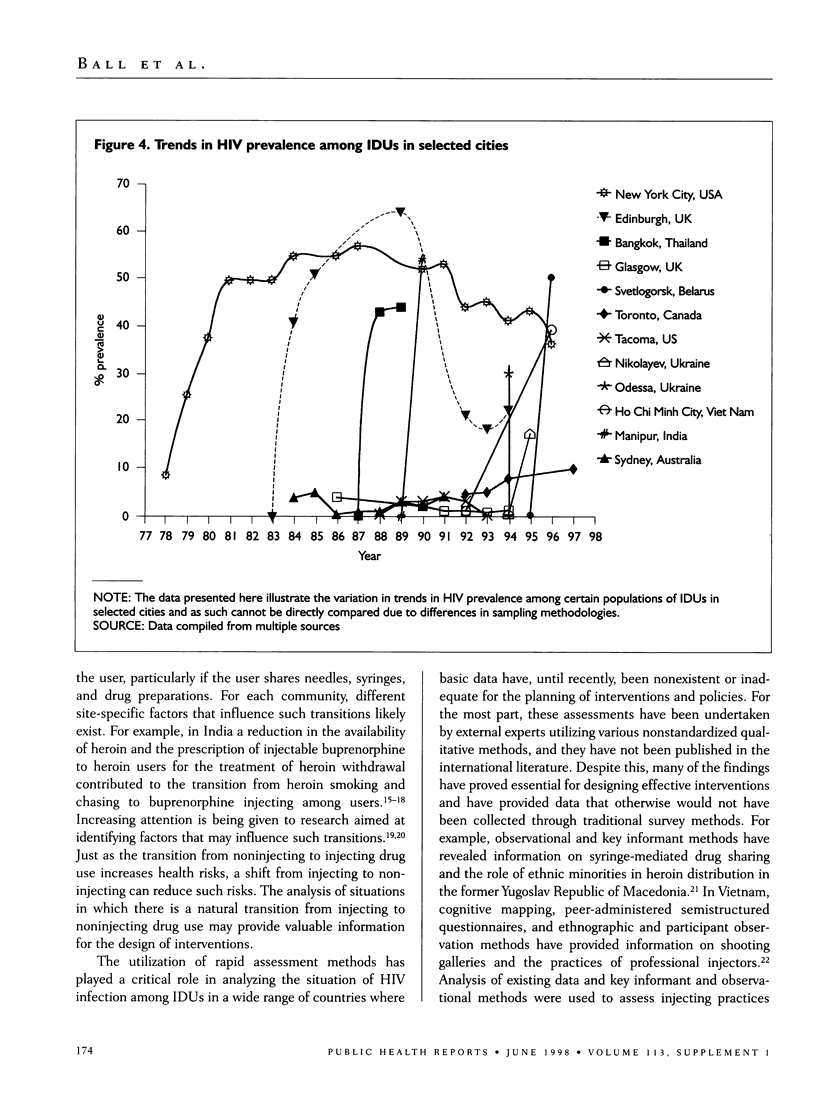
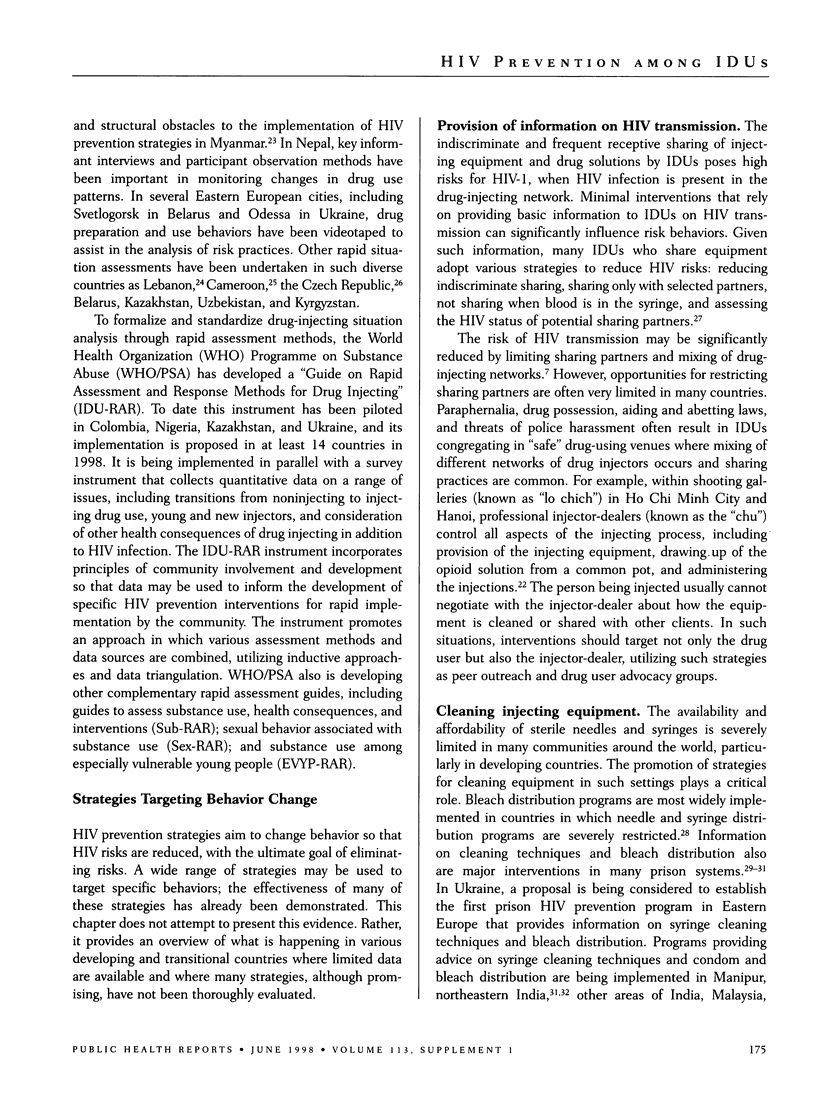


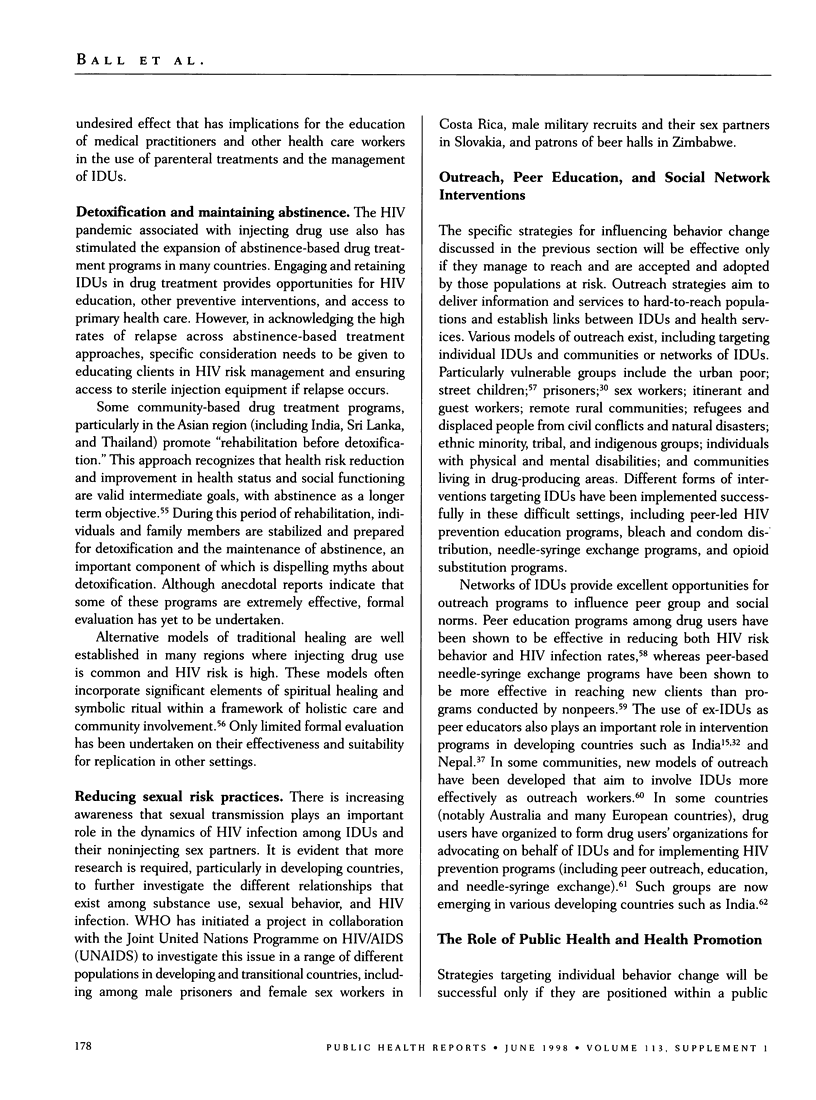
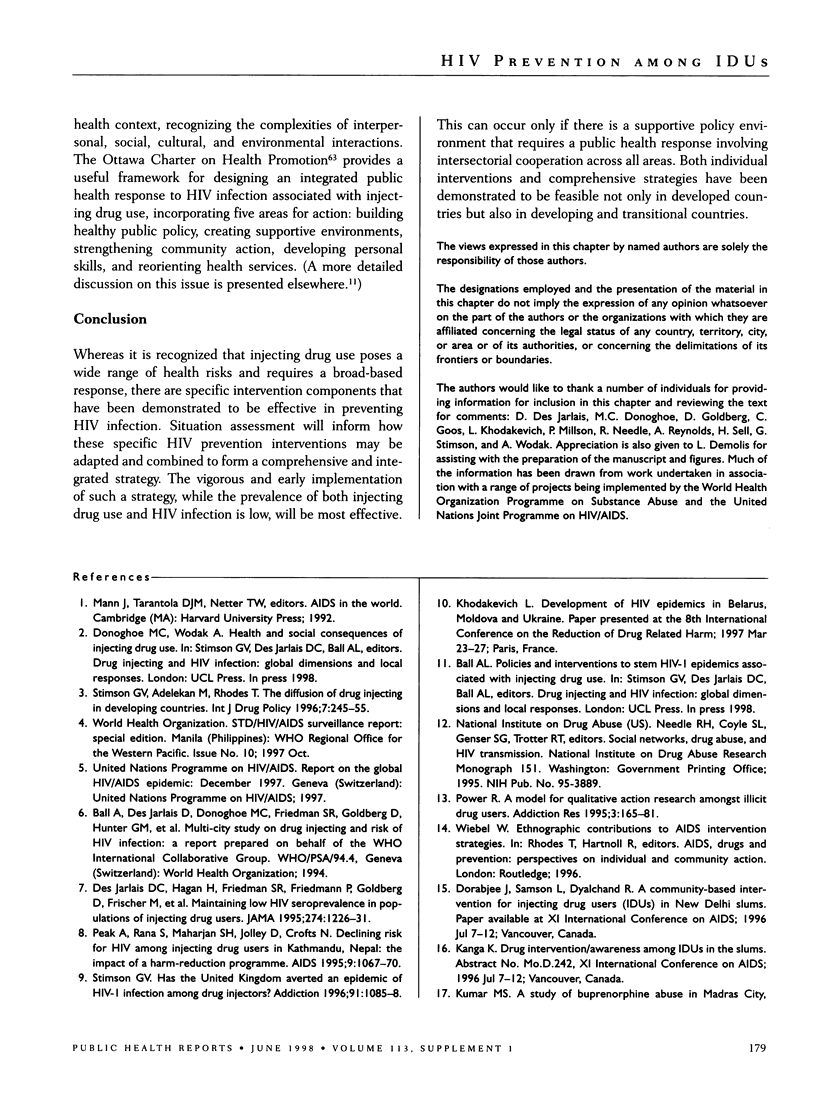
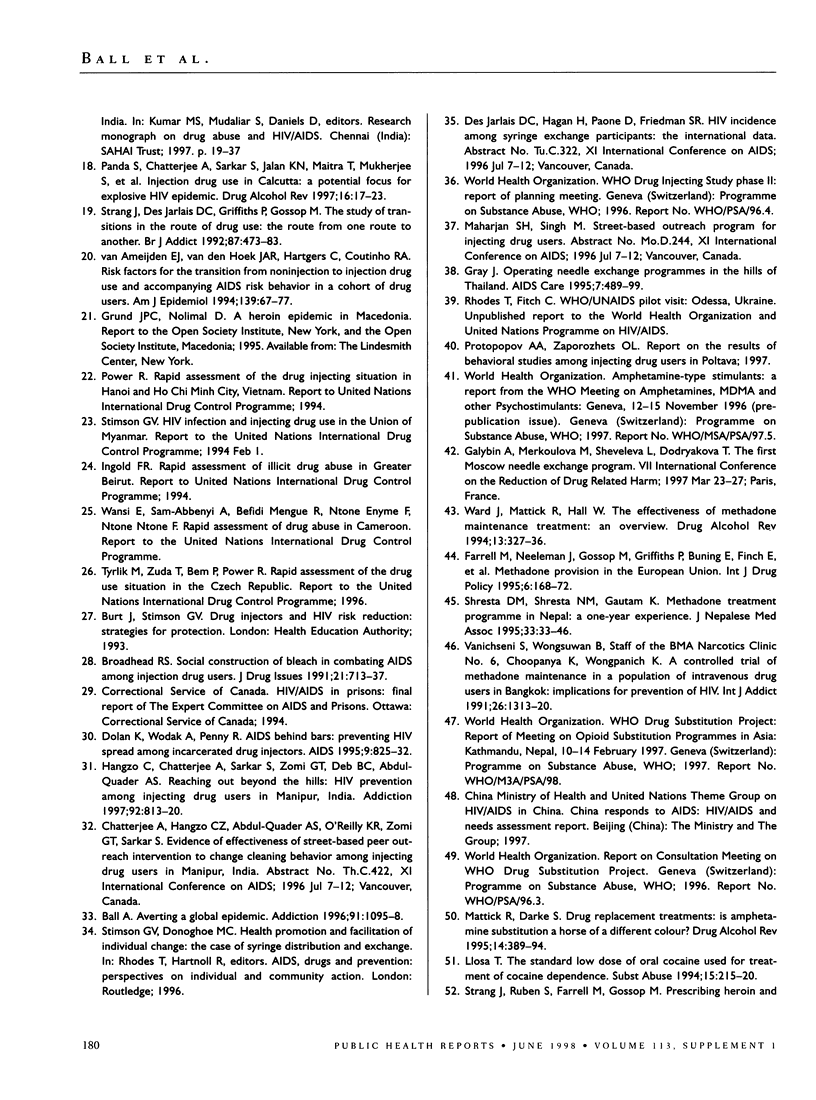
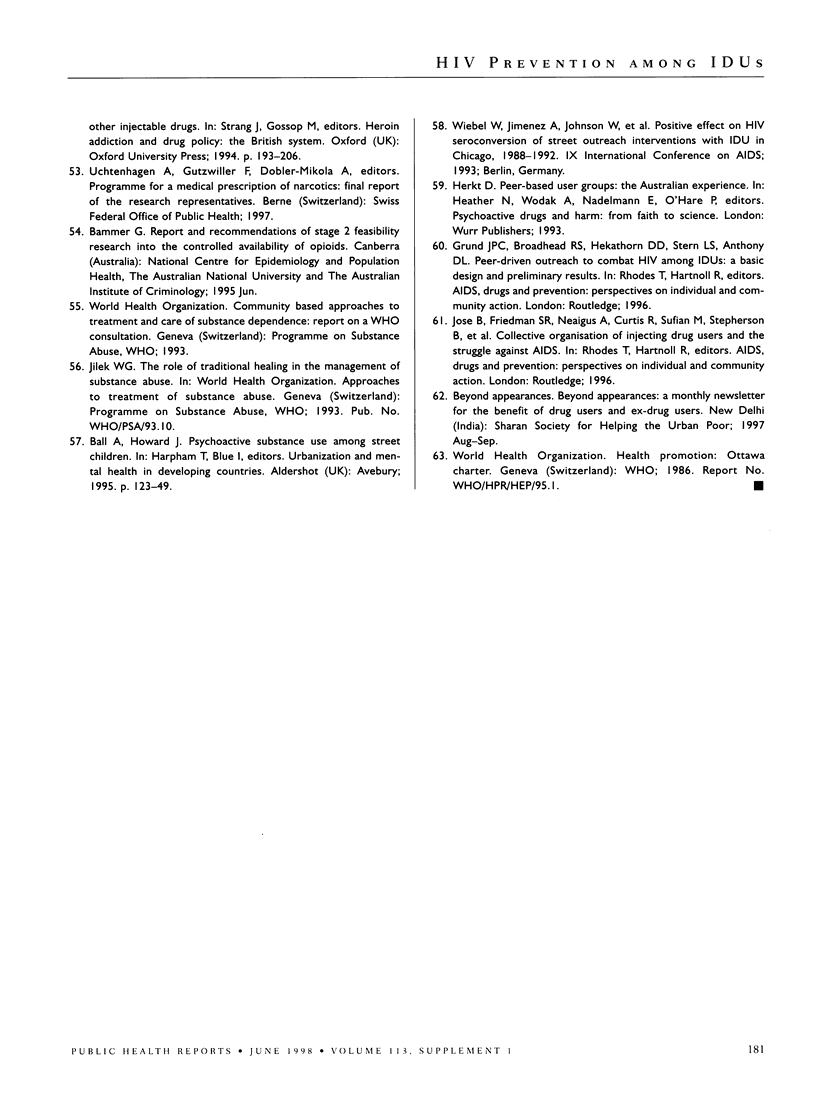
Selected References
These references are in PubMed. This may not be the complete list of references from this article.
- Des Jarlais D. C., Hagan H., Friedman S. R., Friedmann P., Goldberg D., Frischer M., Green S., Tunving K., Ljungberg B., Wodak A. Maintaining low HIV seroprevalence in populations of injecting drug users. JAMA. 1995 Oct 18;274(15):1226–1231. doi: 10.1001/jama.274.15.1226. [DOI] [PubMed] [Google Scholar]
- Dolan K., Wodak A., Penny R. AIDS behind bars: preventing HIV spread among incarcerated drug injectors. AIDS. 1995 Aug;9(8):825–832. [PubMed] [Google Scholar]
- Gray J. Operating needle exchange programmes in the hills of Thailand. AIDS Care. 1995;7(4):489–499. doi: 10.1080/09540129550126434. [DOI] [PubMed] [Google Scholar]
- Hangzo C., Chatterjee A., Sarkar S., Zomi G. T., Deb B. C., Abdul-Quader A. S. Reaching out beyond the hills: HIV prevention among injecting drug users in Manipur, India. Addiction. 1997 Jul;92(7):813–820. [PubMed] [Google Scholar]
- Mattick R. P., Darke S. Drug replacement treatments: is amphetamine substitution a horse of a different colour? Drug Alcohol Rev. 1995;14(4):389–394. doi: 10.1080/09595239500185531. [DOI] [PubMed] [Google Scholar]
- Panda S., Chatterjee A., Sarkar S., Jalan K. N., Maitra T., Mukherjee S., Mukherjee B., Deb B. C., Abdul-Quader A. S. Injection drug use in Calcutta: a potential focus for an explosive HIV epidemic. Drug Alcohol Rev. 1997 Mar;16(1):17–23. doi: 10.1080/09595239700186291. [DOI] [PubMed] [Google Scholar]
- Peak A., Rana S., Maharjan S. H., Jolley D., Crofts N. Declining risk for HIV among injecting drug users in Kathmandu, Nepal: the impact of a harm-reduction programme. AIDS. 1995 Sep;9(9):1067–1070. doi: 10.1097/00002030-199509000-00013. [DOI] [PubMed] [Google Scholar]
- Stimson G. V. Has the United Kingdom averted an epidemic of HIV-1 infection among drug injectors? Addiction. 1996 Aug;91(8):1085–1099. doi: 10.1046/j.1360-0443.1996.91810892.x. [DOI] [PubMed] [Google Scholar]
- Strang J., Des Jarlais D. C., Griffiths P., Gossop M. The study of transitions in the route of drug use: the route from one route to another. Br J Addict. 1992 Mar;87(3):473–483. doi: 10.1111/j.1360-0443.1992.tb01948.x. [DOI] [PubMed] [Google Scholar]
- Vanichseni S., Wongsuwan B., Choopanya K., Wongpanich K. A controlled trial of methadone maintenance in a population of intravenous drug users in Bangkok: implications for prevention of HIV. Int J Addict. 1991 Dec;26(12):1313–1320. doi: 10.3109/10826089109062163. [DOI] [PubMed] [Google Scholar]
- Ward J., Mattick R. P., Hall W. The effectiveness of methadone maintenance treatment: an overview. Drug Alcohol Rev. 1994;13(3):327–335. doi: 10.1080/09595239400185431. [DOI] [PubMed] [Google Scholar]


